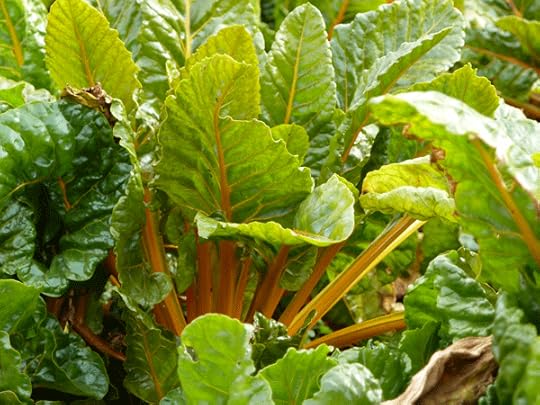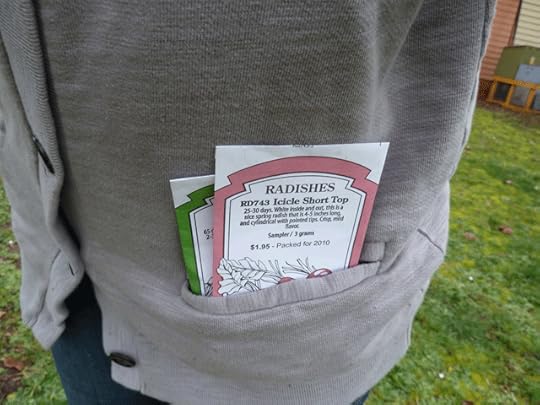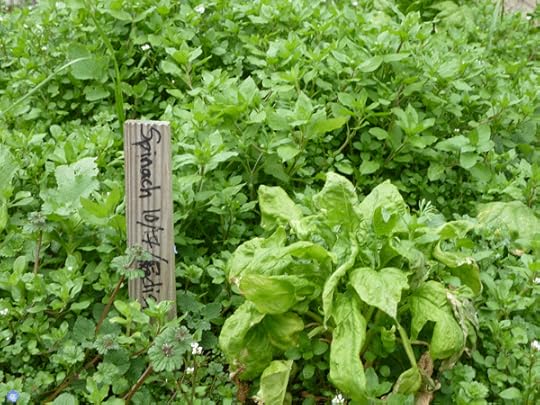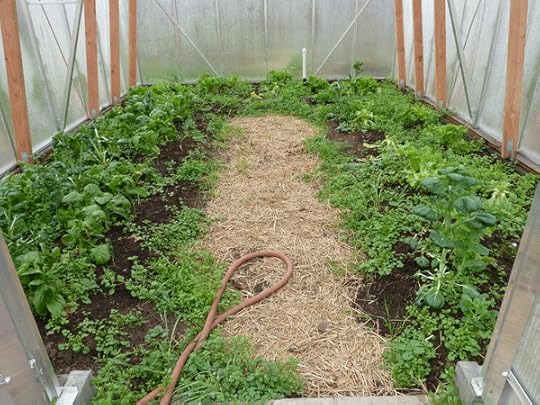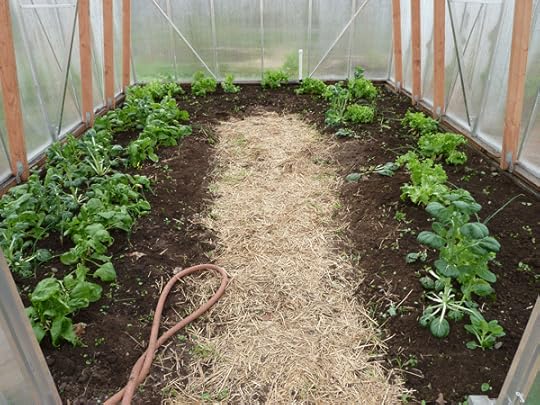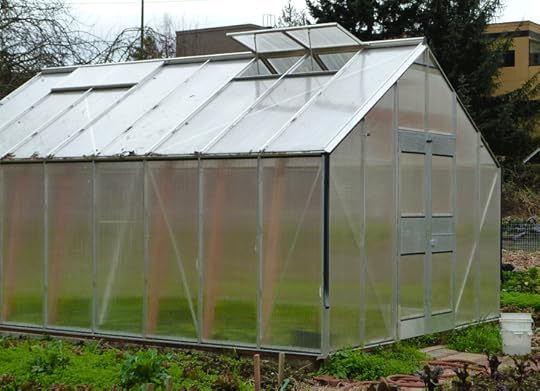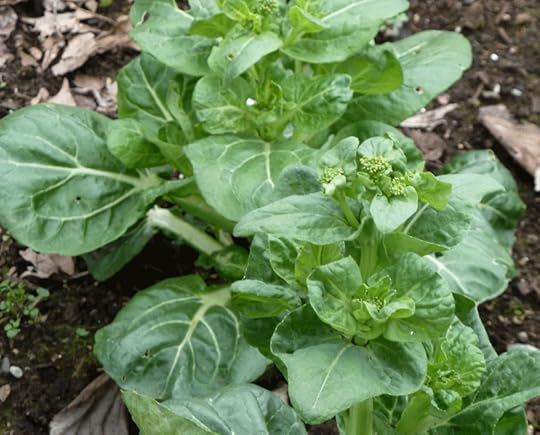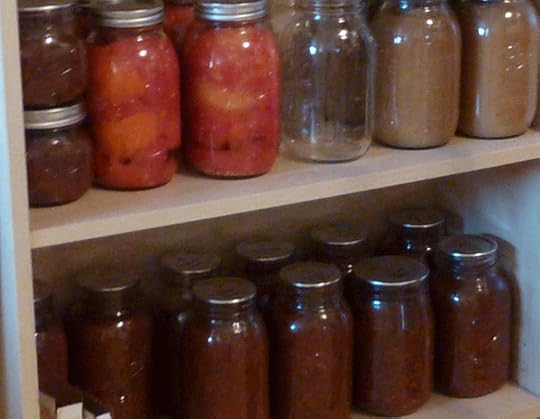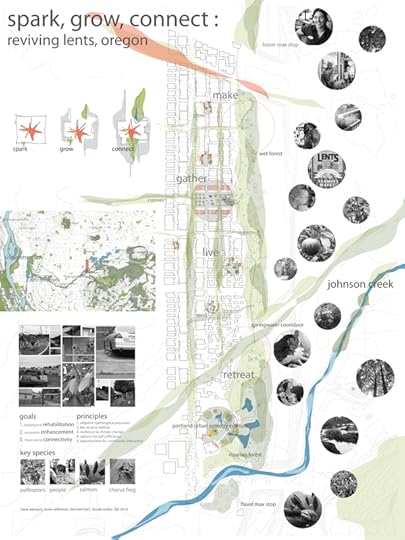Renee Wilkinson's Blog, page 35
March 15, 2011
Swiss Chard for Dinner
We have been having swiss chard for dinner now for about three months. It's a versatile vegetable packed with great vitamins and minerals – especially great for getting through these last weeks of winter. I thought I would share some simple ways we have been cooking it up. Nothing fancy – just simple cooking with freshly picked greens.
Warm a couple tablespoons of olive oil in a large saucepan on medium. Chop the chard into 1/4″ pieces, separating (loosely) the stems and leaves. Add the stems to the pan and saute for about 4 minutes. Add the leaves and dash in red chili flakes. If you want something tangy and spicy, try adding a couple tablespoons of an asian chili sauce. Pepper generously, sprinkle in some salt and eat warm.
Sweet Swiss Chard
I make this for my nephews when they come over. Cook the stems and leaves as described above, but add about one tablespoon of maple syrup when you add the leaves. A little goes a long way. Salt and pepper, then serve warm.
Swiss Chard Scramble
Melt one or two tablespoons of butter in a saute pan over medium heat. Add the stems and cook for four minutes, then add in the leaves for another 3-4 minutes. Salt and pepper well. Remove from the pan and reserve. Add another tablespoon of butter and turn the heat down to medium-low. Beat about six eggs with four cloves of chopped garlic, then pour into the pan. Cook slowly while stirring often to scramble. As they get close to finishing, add the cooked chard and 1/4 cup of fresh Italian parsley.
Sausage & Chard Scramble
Saute some sausage chunks over medium heat until cooked through. Remove and set aside. Leave about two tablespoons of grease in the pan and follow instructions above. Pour sausage, chard and thyme into scrambled eggs as they are close to finishing. Sprinkle with parmesan.
March 10, 2011
Another New Herb Garden
An herb garden is usually the first thing I plant at a new home. This is the perfect time of year to plant cuttings because the weather will stay mild for several more months. Their root systems should be fairly well-established by summertime, so they should be fairly self-sufficient. What looks like an empty, barren part of the front yard is actually a patch of garden when you look closer.
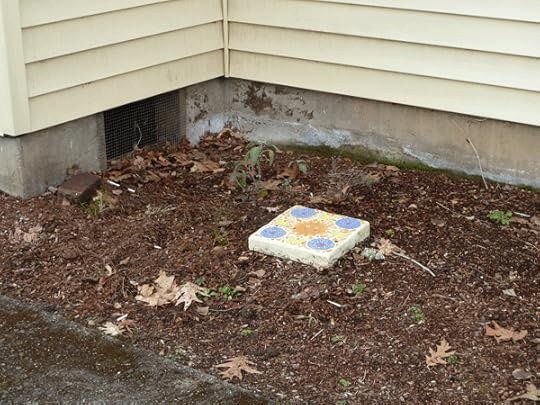 I planted our new herb garden using cuttings from established herbs nearby, so I didn't spend a dime. To get cuttings, just gently dig out along the edges of the plant little sections or sprigs of herb. Be careful to get a good root attached to the spring.
I planted our new herb garden using cuttings from established herbs nearby, so I didn't spend a dime. To get cuttings, just gently dig out along the edges of the plant little sections or sprigs of herb. Be careful to get a good root attached to the spring.
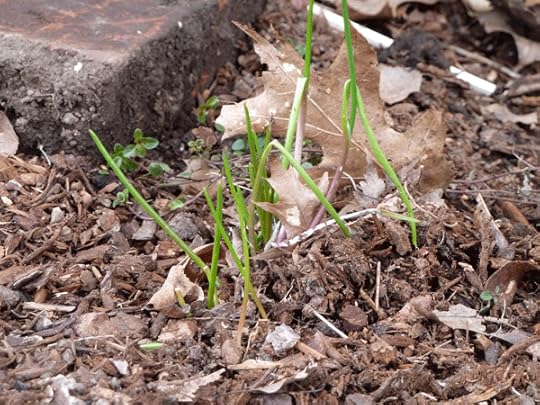 The cuttings I planted were thyme, sage, chives and oregano, now in a sad little patch in our front yard. There is a great, robust rosemary and lavender already at our front steps. Adding to that with more herbs will look great year-round and is close to the kitchen when we need them.
The cuttings I planted were thyme, sage, chives and oregano, now in a sad little patch in our front yard. There is a great, robust rosemary and lavender already at our front steps. Adding to that with more herbs will look great year-round and is close to the kitchen when we need them.
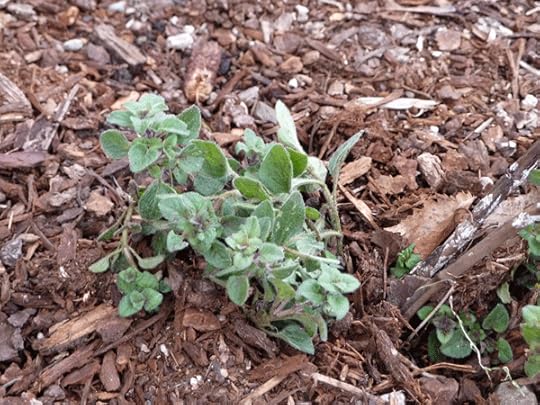 After initial planting, I poured some diluted rooting hormone on the herb garden. I've had the stuff it for years from a past project and wanted to just use it up. It will help the plants with establishing new roots, but it is not necessary.
After initial planting, I poured some diluted rooting hormone on the herb garden. I've had the stuff it for years from a past project and wanted to just use it up. It will help the plants with establishing new roots, but it is not necessary.
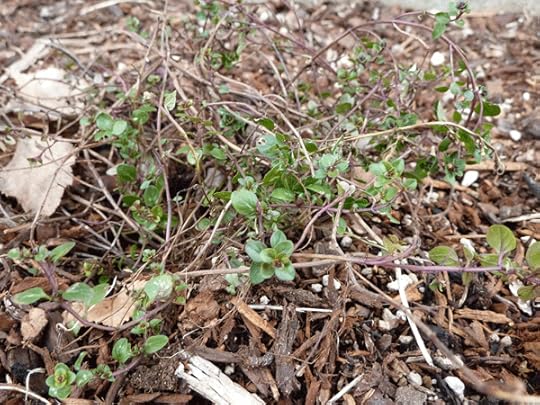 I'm so excited to see these weany little plants turn into a lush patch in a few months. I used the same method of planting cuttings, without any rooting hormone, at my mom's house a few years back. It's a gorgeous part of her backyard now that she never has to maintain.
I'm so excited to see these weany little plants turn into a lush patch in a few months. I used the same method of planting cuttings, without any rooting hormone, at my mom's house a few years back. It's a gorgeous part of her backyard now that she never has to maintain.
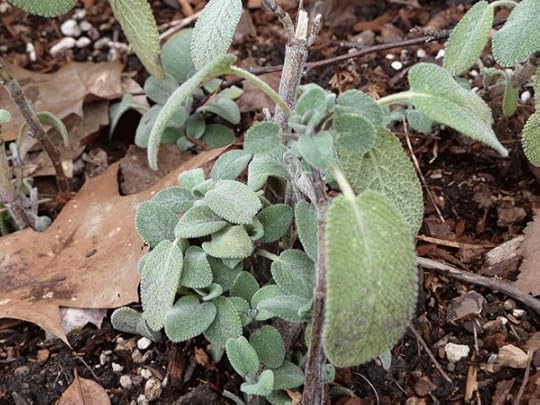 How many herb gardens is this for me now… Of the places I have lived, I would guess this makes number eight or nine? On the bright side I think it makes me an expert of sorts on small spaces and portable gardens, but it sure does make me miss our homestead in Portland.
How many herb gardens is this for me now… Of the places I have lived, I would guess this makes number eight or nine? On the bright side I think it makes me an expert of sorts on small spaces and portable gardens, but it sure does make me miss our homestead in Portland.
March 2, 2011
Duck Breed Decisions
I need your help! I hinted the other day that our backyard flock of chickens may be getting some new neighbors. We are adding ducks to our modern homestead and we need to decide on a breed.
These cute little creatures are becoming increasingly popular as a backyard livestock option. They are docile creatures and light-weight breeds are generally poor flyers with high egg production. Their eggs are about 25% the size of a chicken egg and the best layers produce more eggs per year than chickens.

Photo by Bjoern Clauss
Some of the most popular backyard options are Khaki Campbell and Indian Runners, although there are over twenty breeds of domestic ducks being raised in the US. We have been planning on getting a small flock of Runners, also called Bottlenecks, this month to raise from ducklings. We love their quirky look and they are excellent backyard layers.
Our plan hit a speed bump though as I called local farms to find a duckling source. I stumbled upon a critically endangered breed called Ancona being raised by a local farm in the Eugene area, called Boondockers Farm.
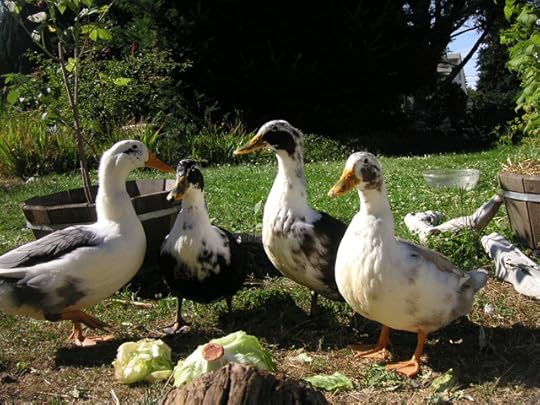 I did some sleuthing and by all accounts they seem to be the perfect backyard duck option for the Pacific NW. I talked to Evan from the farm about this rare breed. How does he feel about people raising them for eggs, rather than breeding? They are a dual purpose breed that you cannot buy sexed, meaning we will probably eat half of them. Is he okay with people eating this uncommon breed?
I did some sleuthing and by all accounts they seem to be the perfect backyard duck option for the Pacific NW. I talked to Evan from the farm about this rare breed. How does he feel about people raising them for eggs, rather than breeding? They are a dual purpose breed that you cannot buy sexed, meaning we will probably eat half of them. Is he okay with people eating this uncommon breed?
The answer to everything was yes, he's cool with it. They want to see the breed become more common in every way – for breeding, eggs, meat production, etc.
So now I am left with a tough decision that I want you to weigh in on. Do I choose Runners with a graceful, quirky appearance in the backyard? Or do I choose the Ancona duck to help promote this breed in the backyard?
March 1, 2011
Cold Chickens
Our backyard flock has been taking it easy this winter. They have been enjoying a mild winter and took a break from laying eggs. Florence, our Rhode Island Red, and Maude, our Brahma, decided there was enough natural light to start laying again. Since then, the two girls have been giving us an egg or two a day.
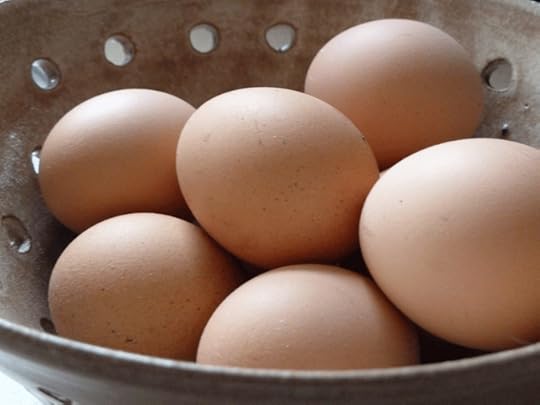 Pearl, on the other hand, is not ready to go back to work. She is our oldest hen, an Arucana or Americana, and we guess she is around six now. Last year she laid from around March-August, so we expect her to take another month or two before those blue-green eggs join the others in the egg bowl.
Pearl, on the other hand, is not ready to go back to work. She is our oldest hen, an Arucana or Americana, and we guess she is around six now. Last year she laid from around March-August, so we expect her to take another month or two before those blue-green eggs join the others in the egg bowl.
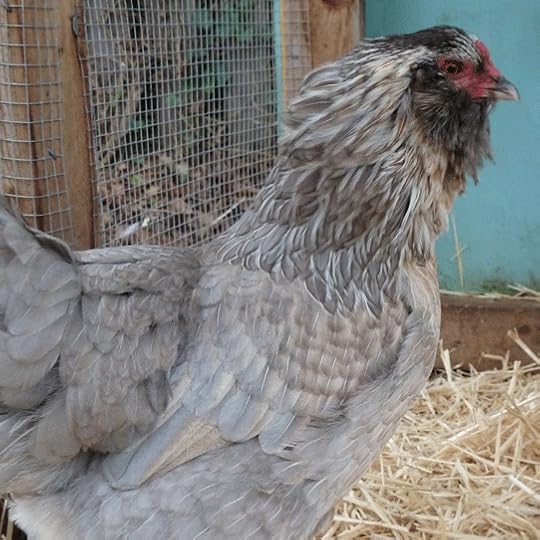 I was getting concerned last week when the mild winter weather decided to take a turn. We got a few days of light snow and the temperature hovered around the teens one night. Every chicken-keeper has their own "code" or sorts on where their breaking point is on bringing the flock into a warmer spot. Knowing they have pretty heavy winter coats, we left them in the coop with some extra straw to nestle in during the day.
I was getting concerned last week when the mild winter weather decided to take a turn. We got a few days of light snow and the temperature hovered around the teens one night. Every chicken-keeper has their own "code" or sorts on where their breaking point is on bringing the flock into a warmer spot. Knowing they have pretty heavy winter coats, we left them in the coop with some extra straw to nestle in during the day.
They don't seem phased by the cold snap and egg production didn't take a break either. We kept a close eye on them for any signs of frost bite, which we didn't find. We also refilled their water twice a day, as it kept freezing.
The chickens might get some new roommates in the backyard soon, but that's another post for another day!
February 22, 2011
Planting Season Begins
Well, I didn't get my peas in by President's Day… but I was damn close! I woke up to a sliver of sunshine outside, stuffed seed packets in my pockets, and made today the first planting day for our new garden. I decided to let my never-ending to-do list just wait while I got some dirt under my nails.
The recent winter rains have really helped the new garden bed mulch layers settle. To prep for seed planting,I tossed the large bed up with a pitch fork like I was a hand mixer for the soil. The chicken poop, straw, leaves and soil are starting to become one. They should be much more broken down when my larger spring goes in a month from now.
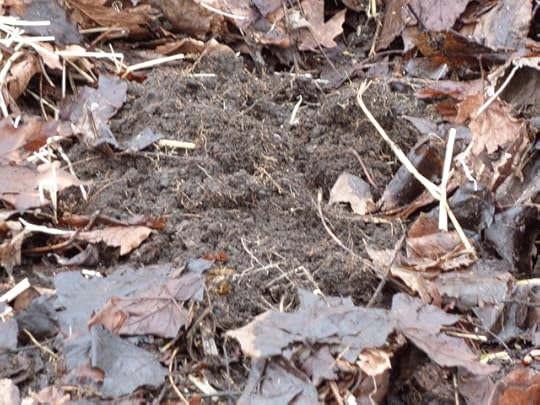 This morning I just planted peas along the (ugly) chain-link fence that edges one side of my garden plot. It's essentially a built in trellis I can make useful and prettier with peas and beans. I'm already dreaming of savory pea soups and crispy stir-fry.
This morning I just planted peas along the (ugly) chain-link fence that edges one side of my garden plot. It's essentially a built in trellis I can make useful and prettier with peas and beans. I'm already dreaming of savory pea soups and crispy stir-fry.
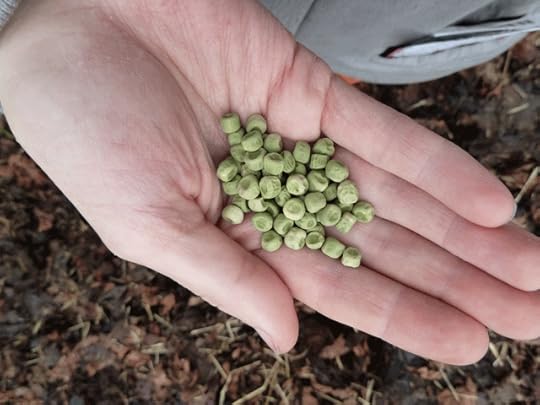 In the mean time, still more cold days ahead and even snow in the forecast. I keep snipping kale, chard and spinach from the Urban Farm to get me through these last cold weeks of winter.
In the mean time, still more cold days ahead and even snow in the forecast. I keep snipping kale, chard and spinach from the Urban Farm to get me through these last cold weeks of winter.
February 15, 2011
Winter Garden Chores
Planting season is just around the corner and it's time to prep the beds that will soon hold spring crops. You can hardly make out the spinach in my beds through all the chickweed right now. As the winter rains let up for a couple weeks, the ground was nice and soft for one of my favorite winter chores: weeding.
Weeding is not everyone's favorite garden pastime, but this is the perfect time of year to clear out pesky weeds. The earth is soft and gentle tugs are usually enough to remove even the deepest dap-rooted weeds. In beds like my spinach patch, clearing out weeds will give my plants a little more elbow room to get bigger.
The greenhouse will soon be getting turned over, so I focused some time there as well. The lettuces inside were moldy, weeds were everywhere, and the tatsoi has been bolting. It took me about an hour to clean it all up. We now have room to plant new crops and store some seedlings.
I'm not weeding every bed – just the ones I will be planting in soon. I'll leave chickweed growing in empty beds, but remove the nastier weeds like quack grass. The chickweed will be easy to pull out in a month and it will protect the soil from the harder spring rains.
I get such satisfaction from this kind of work! Standing back after an hour shows such progress. It also seems to cure my gardening itch that I always get at this time of year, as I wait for seeds to arrive and wait for the last frost date to approach.
February 8, 2011
Winter Harvesting
My outdoor garden beds have been providing me with a steady supply of the usual winter suspects: kale, swiss chard, spinach, collard greens, leeks, and tasty brussel sprouts. Oregon, especially the Willamette Valley, is fortunate to have relatively mild winters and we pretty much live on brassicas from November through February.
This is the first winter I have had the pleasure of gardening with a greenhouse, which has added some new veggies to the mix. It was built from a kit recently at the Urban Farm and it has stayed packed full of plants since the last nail went in. The greenhouse has been producing crisp lettuces and tons of spinach. My outdoor spinach and lettuces just haven't grown much since the cold set in.
I am also trying out tatsoi for the first time this season. It's an Asian green that can withstand really cold temperatures, down to about fifteen degrees (F). Tatsoi has a nice, nutty flavor similar to boy choy. We have been using it in stir frys with lots of garlic, salty cashews and tofu with just a dash of sesame oil.
Unfortunately, all my plants seem to be bolting already! I guess they are so cold-hardy that they really don't want to grow in mild weather. We have been enjoying a week of sunshine and mid-50′s, but I think that means the end of my new winter friend.
January 26, 2011
Slow down winter
Usually winter seems to drag on and on, but not this year. Time is flying by way too quickly for me right now. I'm forcing myself to slow down while the world continues to spin. It feels good, but it feels different from the frantic do-ten-things-at-once-pace that I typically operate at.
I'm not doing all the things I "should" be doing right now. I'm not staying up late every night working on school stuff. I'm not writing on my dear blog as much as I should be writing. After last year of blazing through things and being so impatient with time, I'm just trying to take a break to savor it for a bit.
Some friends and I went snow-shoeing recently up near Oakridge, Oregon. It was quiet, peaceful and a celebration of winter. We brought spirits and snacks to share with each other. I was grinning from ear to ear just being outside – embracing the stillness of snow.
We finished up the day at one of my new favorite places: the Brewer's Union Local 180 in Oakridge. The English-style pub is a diamond in the rough. They typically carry about 4-5 homemade, cask brewed beers on tap. Be still my heart!
I can speak to their fish and chips being delightful. Their bangers and mash were not huge, but amazing after a long day of hiking in the cold.
The seed catalogs await my orders. Spring holds many new, exciting projects: baby chicks, possibly ducklings, possibly baby quail, and some other big news. But for now I feel like politely asking the Autumn Higan Cherry trees to save their blossoms for just a few more weeks. I'm done with this peaceful, quiet winter.
January 21, 2011
Canned Marinara Pizza
In the glut of summer tomatoes, I put up several dozen cans of marinara sauce and whole tomatoes. When winter sets in though I tend to forget about them quietly waiting on my shelves. I just adjust to knowing tomatoes do not grow in winter, so I plan meals using seasonally available ingredients for the most part instead.
Seed catalogs pouring into the mailbox are a reminder that the next growing season is not too far away. I have been revisiting the cupboard of canned goods pretty diligently to meal plan around my preserves.
We recently had my siblings and their families over for a big dinner. I "shopped at home" first to plan the menu. The result was a make-your-own-pizza party using the delicious herb marinara sauce we have stored. Each family brought over about 2-3 toppings. We set them out in little bowls and everyone topped their own pie.
The kids had their own little pizzas, which was hilarious to watch them top. One of my little nephews had to carefully place each single olive slice.
Meanwhile the parents split a larger pizza – also quite entertaining. Some couples worked together more than others. I have to admit that I made Jay stay on his "line" of the pizza. I didn't want the salami, mushroom, olive and basil toppings getting mixed in with my fabulous goat cheese, pre-roasted beet and caramelized onion concoction.
This next week we are looking for good lasagna recipes for the canned marinara sauce and perhaps some yummy stews that we can stir our whole tomatoes into. It sure does make the short winter evenings last a little longer when all that sauce prep has done ahead of time!
January 13, 2011
Fall Term Design Studio
As winter term of my landscape architecture program kicks in, I realized I should do a decent job recapping my project last term! I got to explore beneficial insect-attracting plants, plant species that do well in swales, and other fun ecological issues. I had the pleasure of working with a couple architecture students on the project, which was a challenging but fun learning experience.
The project last term was designing an EcoDistrict in the Lents neighborhood in southeast Portland. Our charge was to design a neighborhood that could accommodate 6x the current density. We envisioned a neighborhood that would provide a high-quality of life for people as well as native wildlife, like birds, frogs and pollinators.
Johnson Creek on the southern end of the site floods every year and has become polluted over time. Stormwater flows over all of that surrounding urban, paved surface and right into the creek. Our solution was to relocate development near the creek northward on the site. We would allow the creek to flood to some extend, build up the riparian forest quality, and divert stormwater into a large swale system throughout the site. These combined efforts would slow the creek, cool the temperature, and clean the stream.
We designed a series of various-sized open spaces for gathering, which would spark surrounding development over time. Residential streets are converted to alleyways with shared pedestrian, bicycle and light car traffic. One group of houses might decide to turn their open space into a shared urban barnyard and food garden. Others might string up lights and have summer picnics in their space. We left it intentionally open-ended so the residents themselves can decide what becomes of their open space.
The Commons is the largest open space area, located in the heart of the site, which includes a permanent home for the weekly farmer's market. Parts of the plaza would flood during heavy rainfalls, creating an urban center that responds to the seasons. In the summer, part of the plaza might have a fountain that shoots up water like a spring for kids to play in.
I don't want to bore you with too many details, so I will leave it at that! It was a really great project and I'm proud of the work we did together. I have experience trying to draw in beneficial insects and build habitat for wildlife on my own urban homestead, but taking it to this larger level was a wonderful challenge. Maybe in a few years I will get to do this stuff on a bigger scale in real life!

